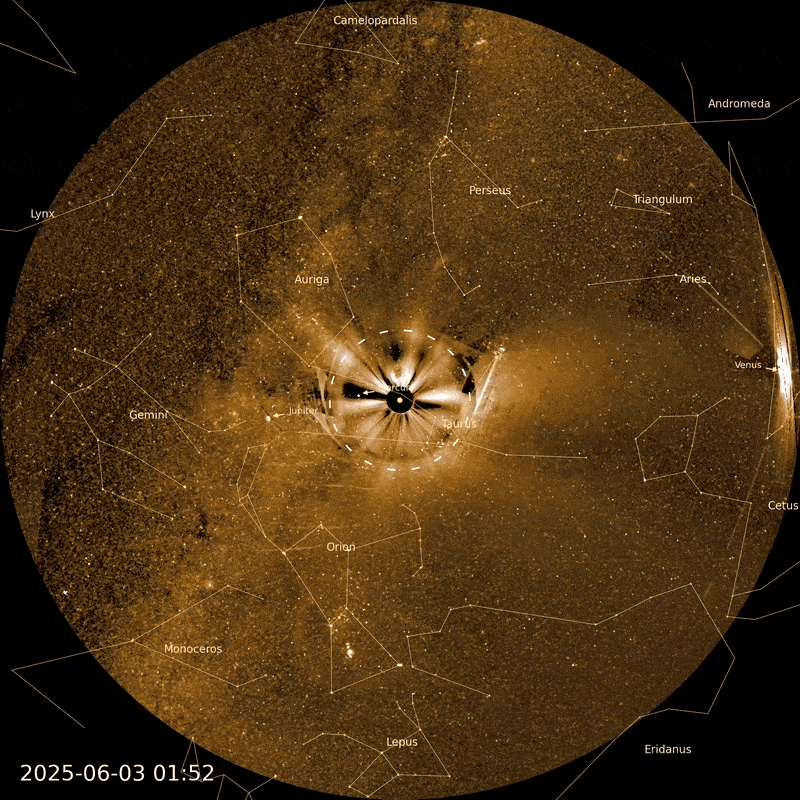First NASA Juno Mission’s close-ups of the Great Red Spot are here
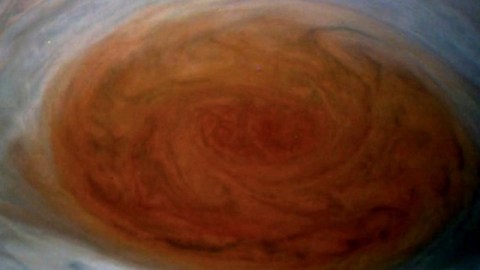
After a generation, we’re finally getting another close-up view. With the science we’re learning, we just might solve its mysteries.
“Jupiter instead cooled down below the threshold for fusion, but it maintained enough heat and mass and pressure to cram atoms very close together, to the point they stop behaving like the atoms we recognize on earth. Inside Jupiter, they enter a limbo of possibility between chemical and nuclear reactions, where planet-sized diamonds and oily hydrogen metal seem plausible.” –Sam Kean
NASA’s Juno mission has been in orbit around Jupiter, the Solar System’s largest planet, for over a year now. During this time, it’s taken pictures of the cloudtops, poles and bands on Jupiter as never before, with more advanced instruments and cameras and also from closer distances than any other spacecraft in history. With eight different instruments designed to measure various properties and layers of Jupiter’s atmosphere, plus an imager known as JunoCam, we’ve been able to image the swirling, turbulent clouds like never before.
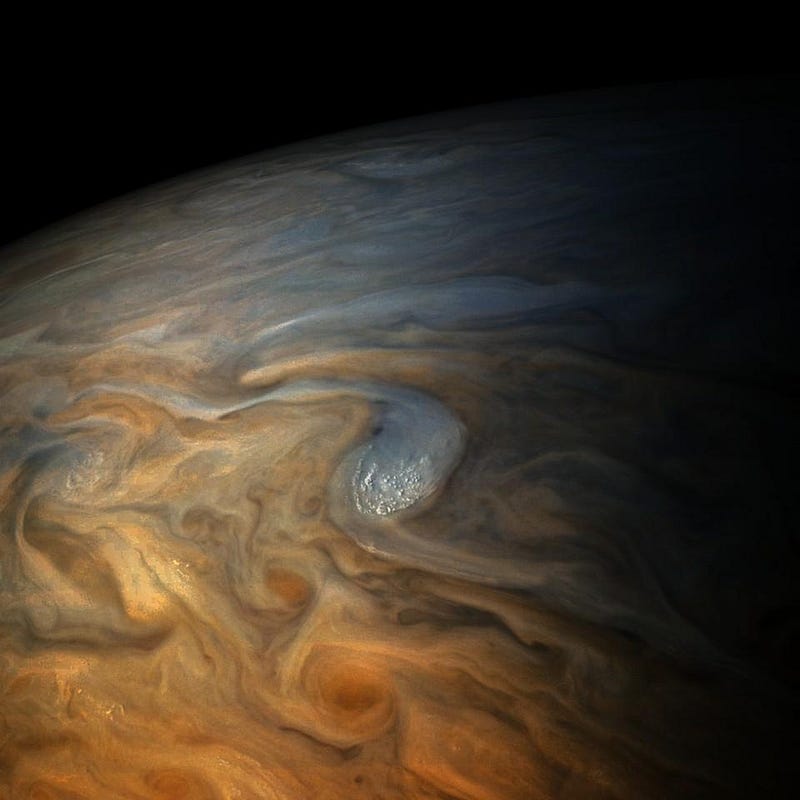
But the greatest storm-of-interest on Jupiter has got to be the Great Red Spot, a giant hurricane that’s endured for at least 177 years, and possibly many hundreds more. Although it’s changed its size extent many times, it’s still more than twice the size of the entire Earth, and its reddish color is one of the mysteries that Juno’s scientific instruments will seek to solve. Previously, however, our closest view of it came from Voyager 1, which flew within about 277,000 kilometers (172,000 miles) of Jupiter back in 1979.
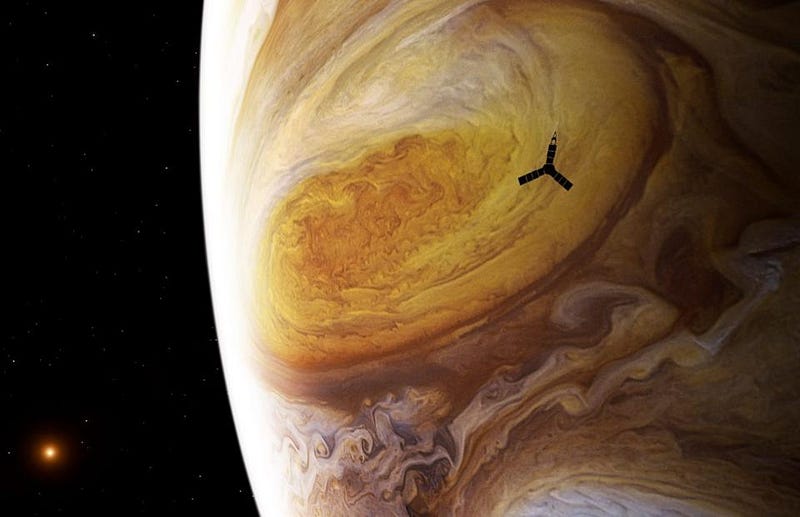
Juno, on the other hand, makes an elliptical orbit that takes it extraordinarily close to the top of Jupiter’s atmosphere. On Monday June 10th, Juno made its seventh closest-approach-pass to Jupiter, known as Perijove, where it came within 3,500 kilometers (2,200 miles) of the edge of the atmosphere. As it dips down low, some new, interesting features can be observed.
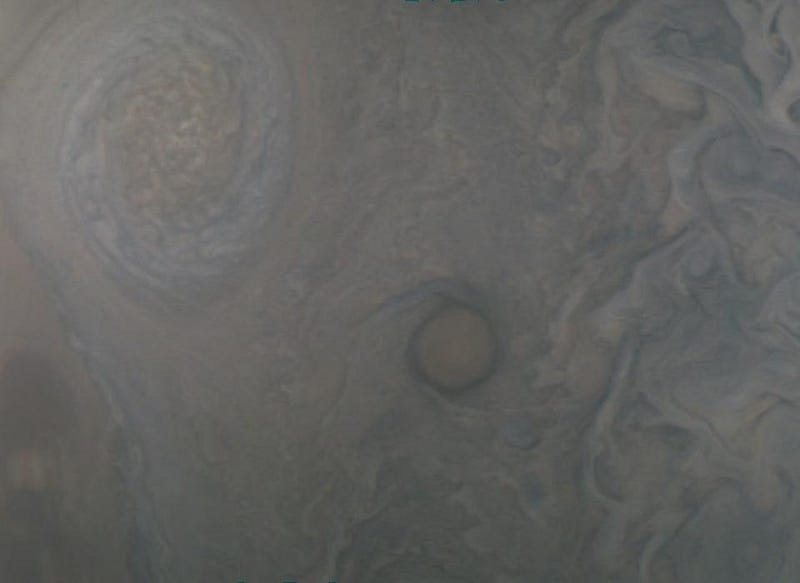
What you see here are hurricane-style storms, swirling at up to 600 kilometers-per-hour, that will last anywhere from hours to years in the turbulent environment of Jupiter. Juno’s unprecedented proximity to Jupiter allows it to pick up features that even Hubble cannot see. When the scientific data is analyzed, we’ll be able to learn the temperature, composition, wind speed, depth, and many other properties about these features.
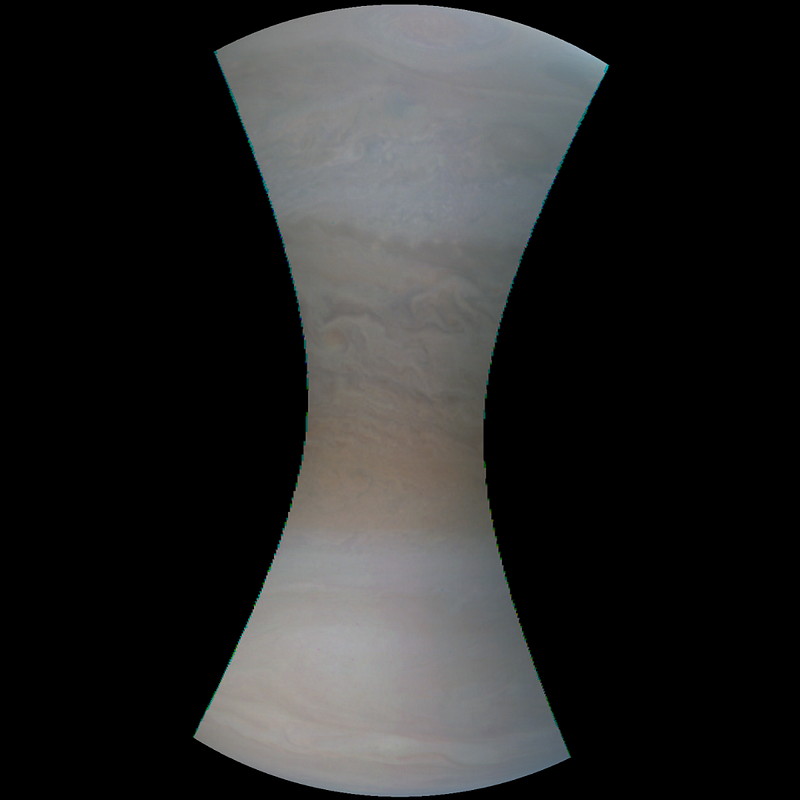
However, Juno gets so close to Jupiter that its actual images appear distorted, in this pinched-hourglass shape. According to NASA,
JunoCam images of Jupiter sometimes appear to have an odd shape. This is because the Juno spacecraft is so close to Jupiter that it cannot capture the entire illuminated area in one image — the sides get cut off.
Just a few minutes after Monday’s closest approach, Juno flew over the Great Red Spot, at an elevation of only 9,000 kilometers (5,600 miles). The three raw images that came back contain a huge amount of information within them.
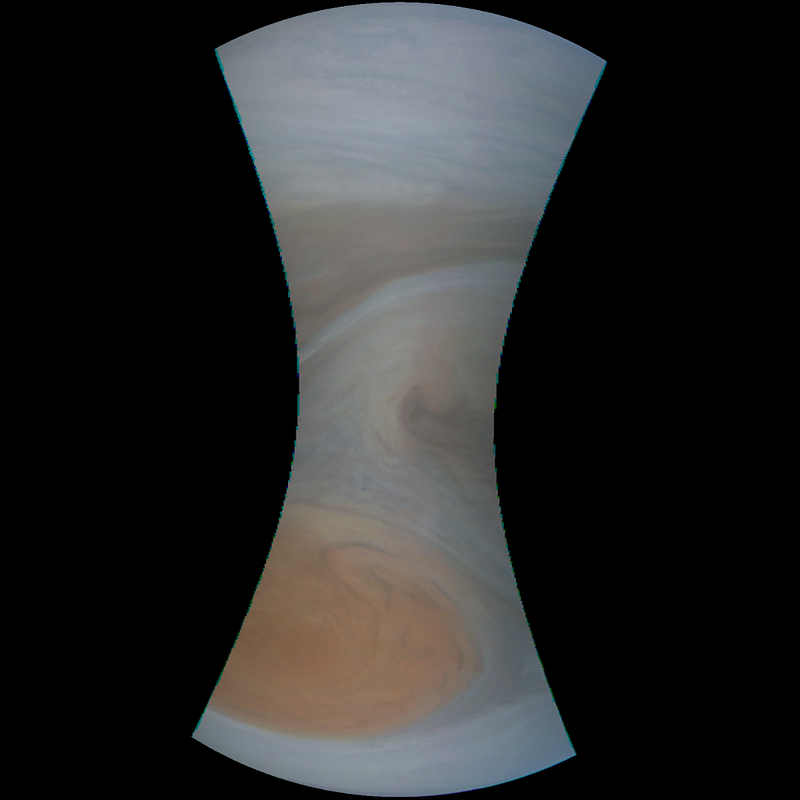
Taken in red, green, and blue filters, and then stacked together to make a composite, color image, these three images combined provide total coverage of the Great Red Spot.
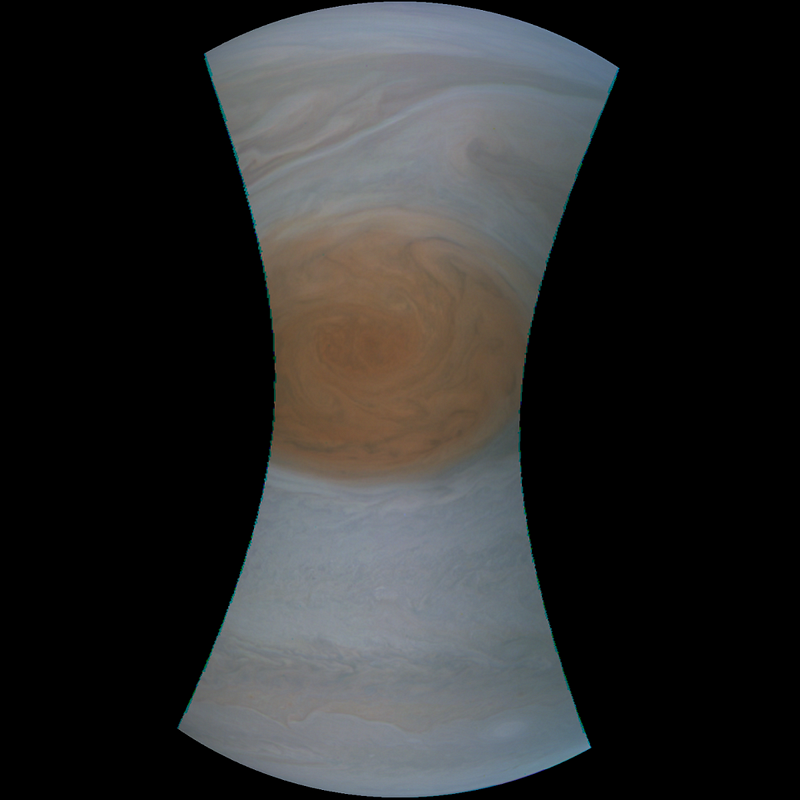
The raw data is freely available from NASA, and showcases not only the three different views, but the surrounding bands and regions as seen by Juno.
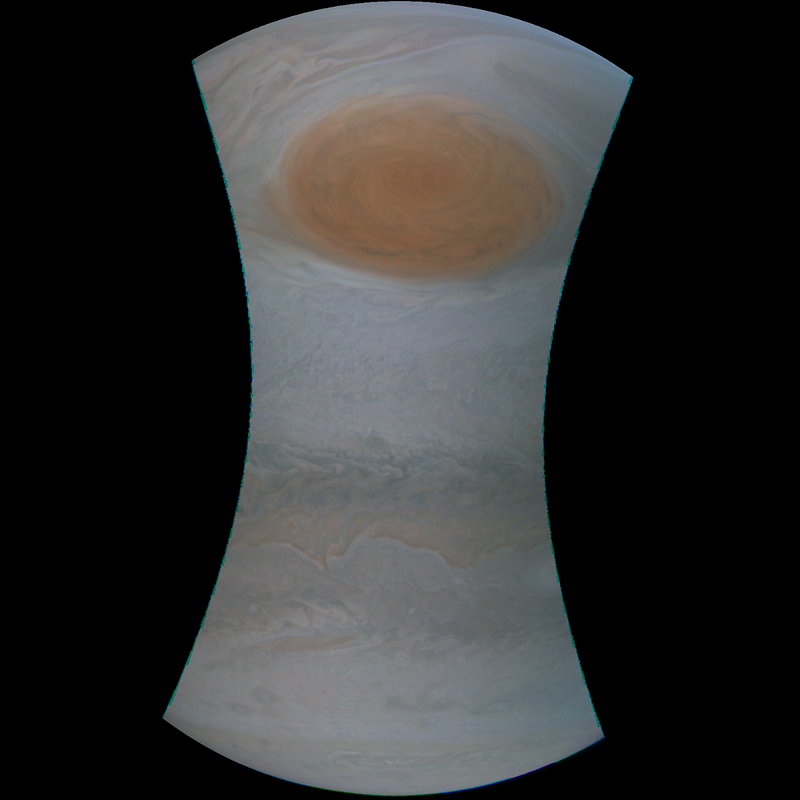
Hanging around and waiting for the scientific analysis will be incredibly informative, but this raw data contains so much useful information on its own that image processing can really bring out some tremendous details here.
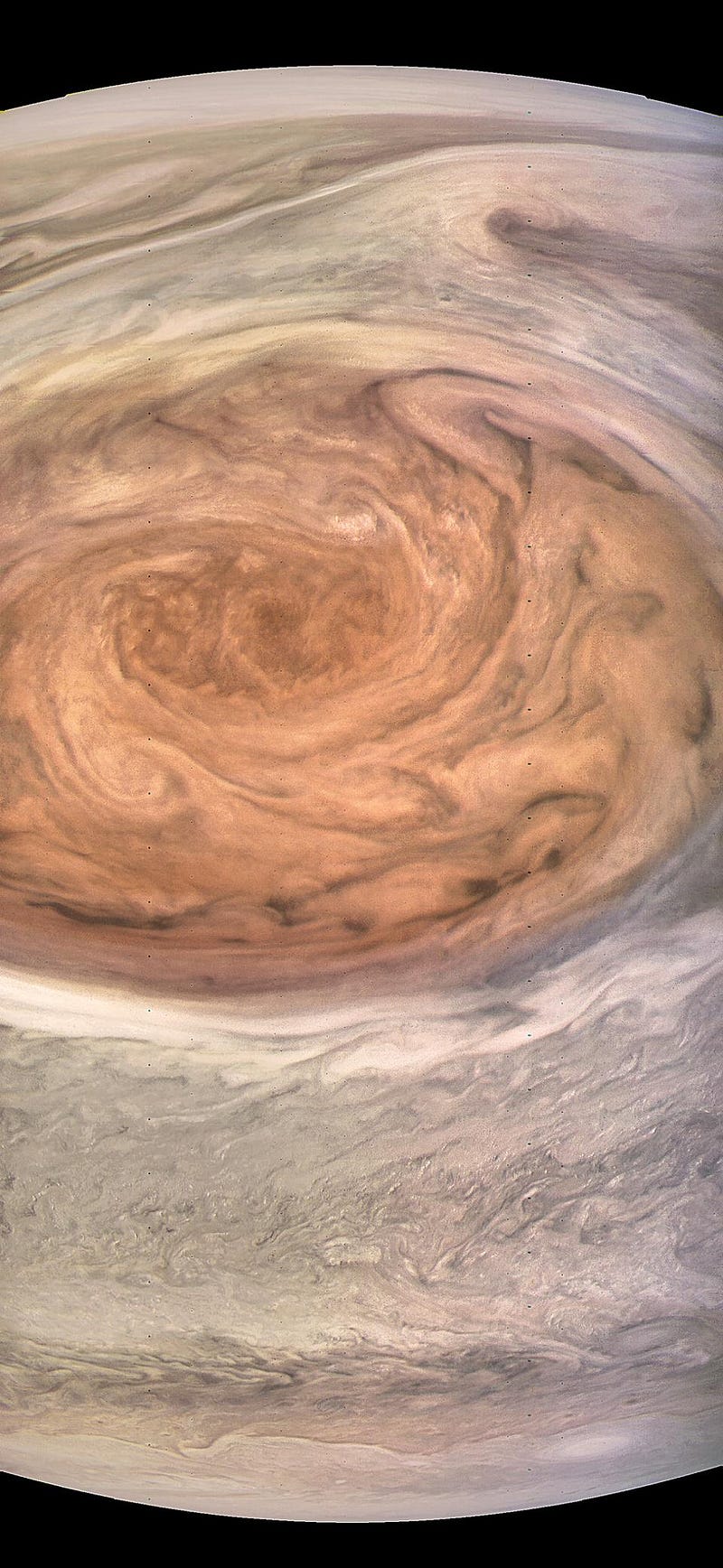
An enhanced-color view will showcase the relief and contrast between the eye of the storm and the rest of Jupiter’s atmosphere.
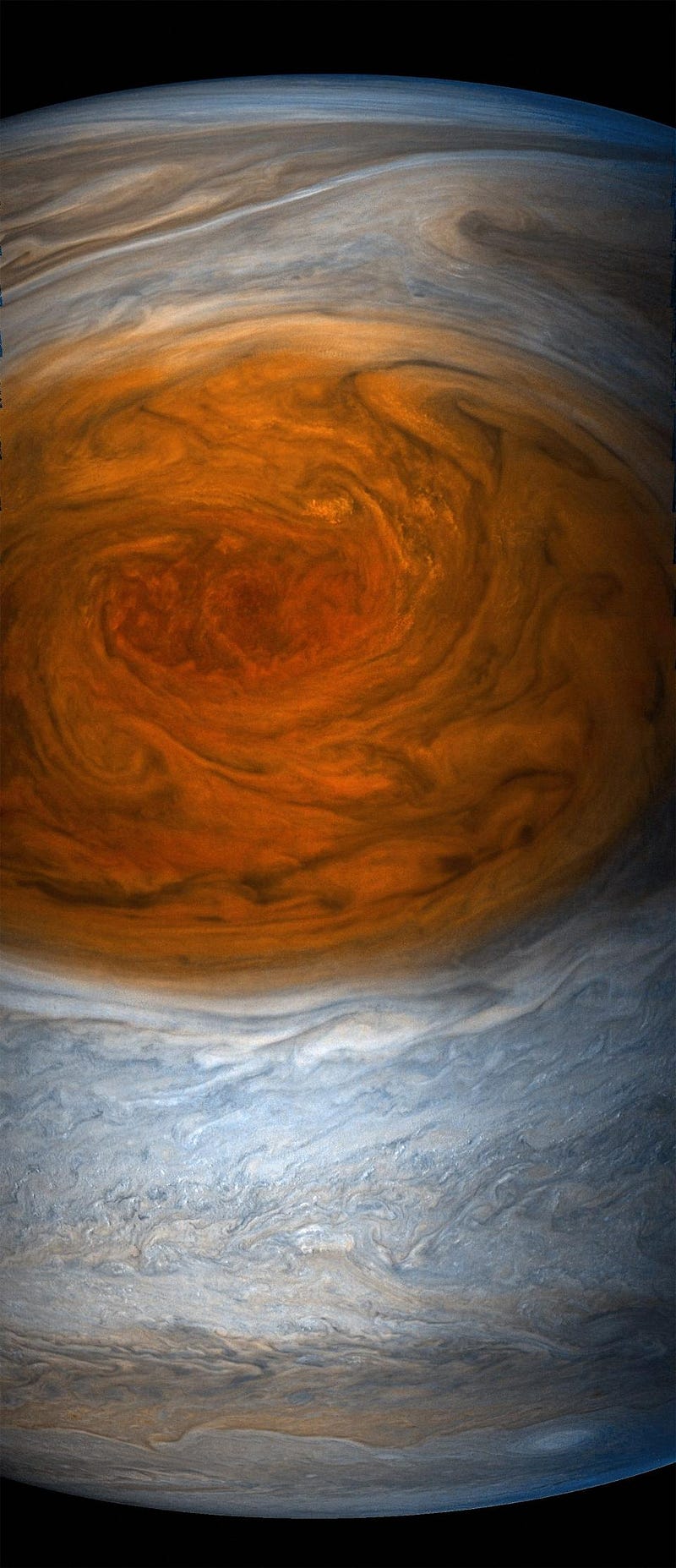
You can clearly see eddies and turbulence at play inside the Great Red Spot itself, which comes about by filling with the color saturation and the contrast.
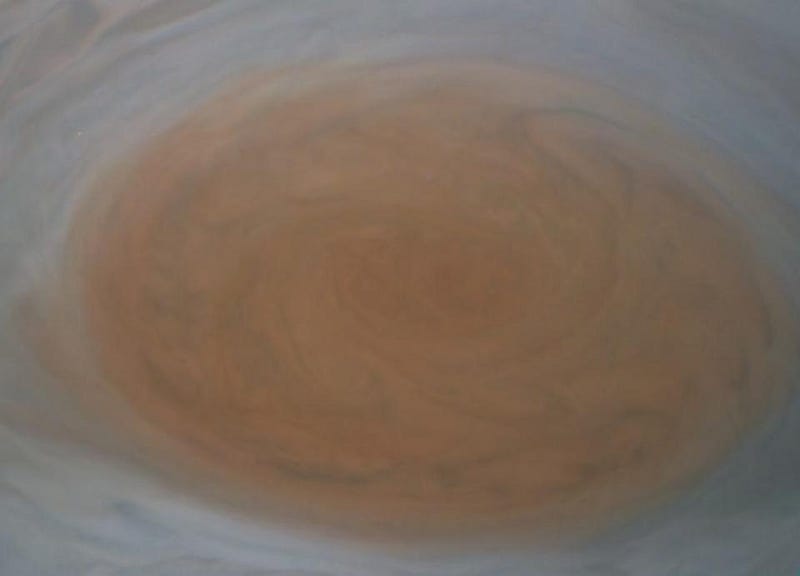
Unprocessed, raw images are available, but after playing with some of the image processing knobs myself, I was able to expose some incredible details in the Great Red Spot, at resolutions never seen before today.
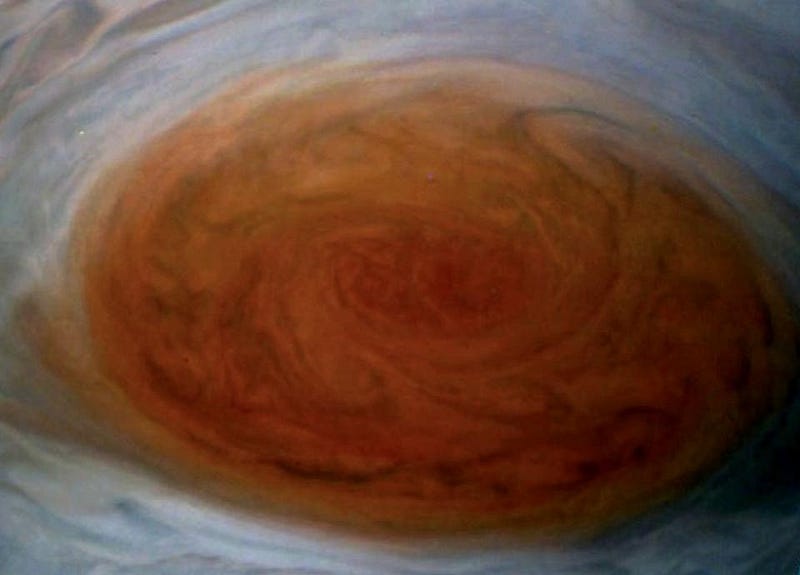
Three of my favorite views, however, are already publicly available on the NASA/Juno website, with more to come.

Processing includes sharpening, contrast, color, saturation, hues, and much more.

Boundary layers in the atmosphere, as well as a variety of features in the spot itself, are exposed through these various techniques.
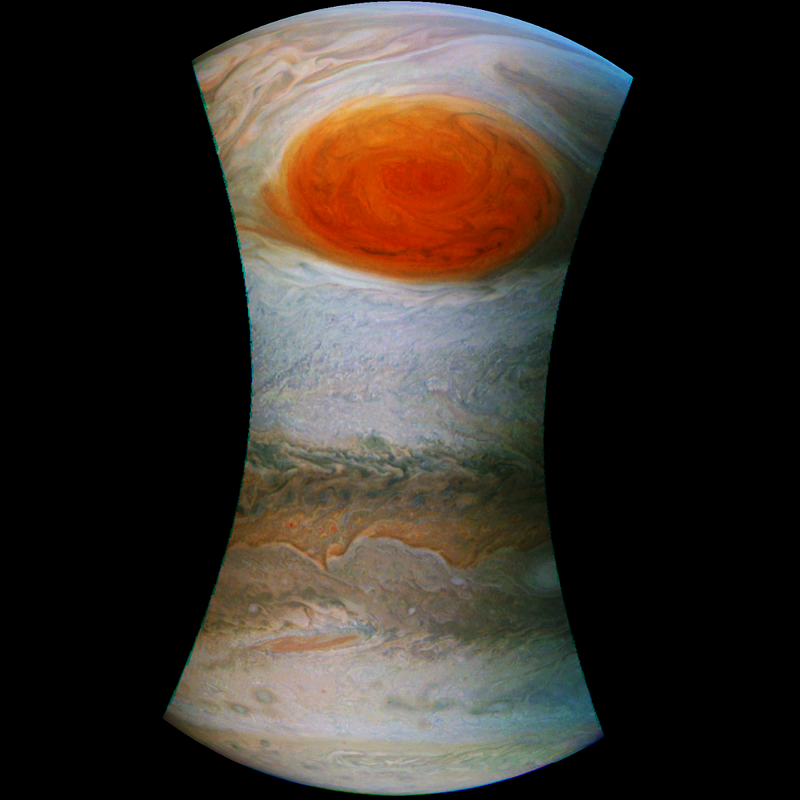
With new images still coming in, and all the science still to come, these first views are only a tantalizing hint of what secrets the largest, most massive world in our Solar System is sure to reveal as Juno’s mission continues.
Ethan Siegel is the author of Beyond the Galaxy and Treknology. You can pre-order his third book, currently in development: the Encyclopaedia Cosmologica.



